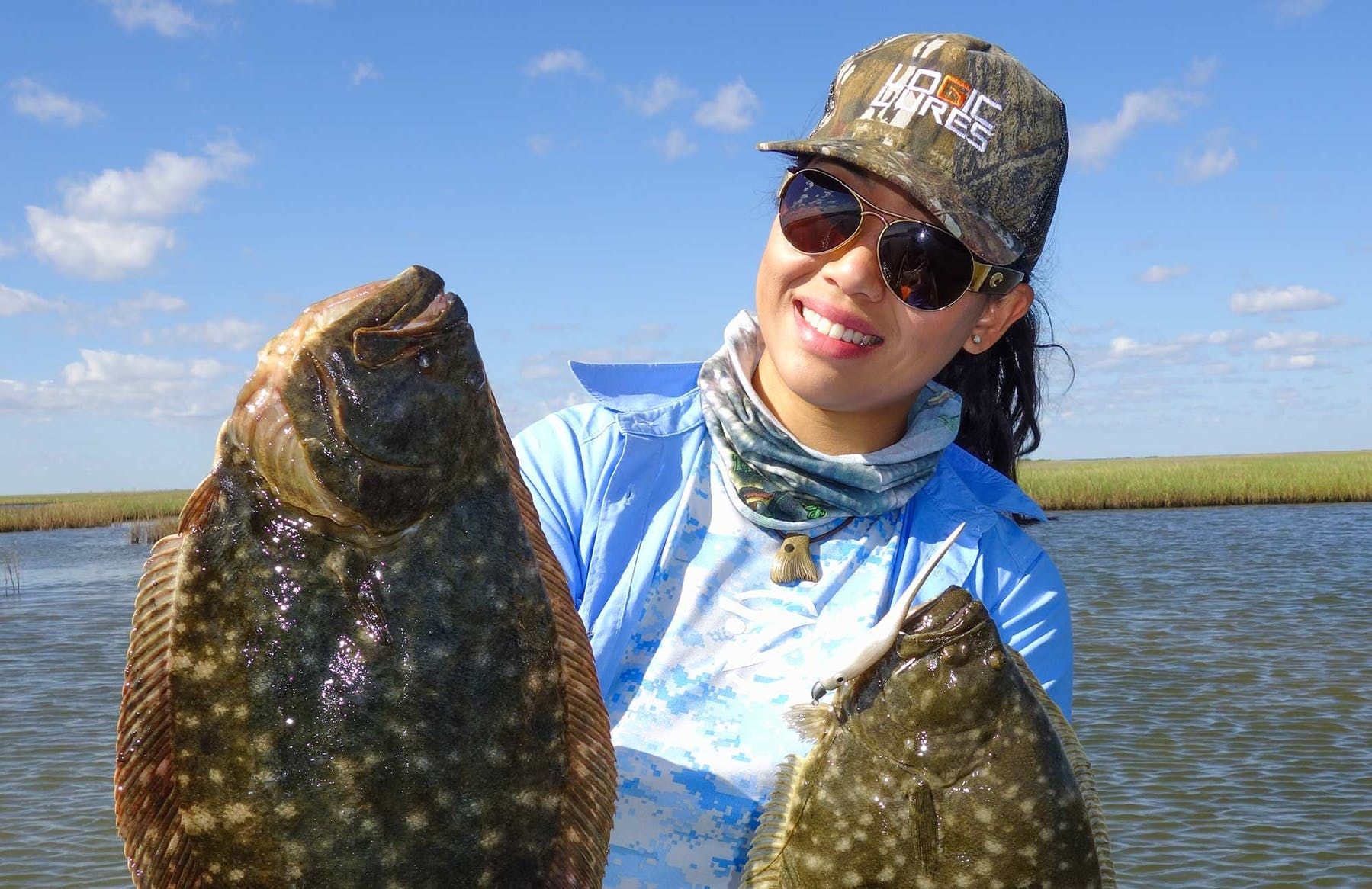Stalking Fall Flounder

Mustad ambassador Cindy Nguyen is one sneaky individual; but don’t take that the wrong way. The Texas angler’s just really good at stalking flounder on foot.
The fourth quarter, Nguyen said, is a great time to be wading for the flat fish; and while she spends most of her time in the Galveston Bay area, her tactics will work just about anywhere in the Gulf, as well as estuaries along the Eastern Seaboard. With these predators following the inward movement of baitfish — finger mullet, in particular — flounder fishing typically increases in size and abundance as autumn progresses.
“Fall is the time of year when flounder are coming into the bay,” Nguyen said. “Areas that have a channel passage are where the flounder are stacked up right now, but I also like to fish on the beach side close to the jetties. I’ve fished there long enough to know where all the little holes are.
“It’s pretty shallow all the way out to the jetties, but you have to go at low tide, because on high tide, you’ll get beat up by the waves.”
Inside the bay or near the jetties, Nguyen says she starts in a familiar area and slowly scoots around until she finds an attractive mix of shallow clean flats adjacent to deep water. Such spots present prime feeding opportunities for the flat fish to lay camouflaged on the bottom and ambush baitfish washed across their radar.

Nguyen’s bait of choice is 3-inch Berkley GULP! Swimming Mullet on a 1/4-ounce Mustad Shad Darter Jig Head. The main feature she likes is the jig’s longer hook shank, which offers two strategic benefits.
“I like the longer shank because the GULP! stays on better,” Nguyen said. “Also, flounder tend to swallow the bait and it’s easier to dehook them with this jig.”
Nguyen finds the most consistent presentation typically is the slowest one. Considering that flounder rarely chase meals like a redfish or trout would do, patience is your biggest asset here. (Most anglers would be surprised to know how many interested flounder had eyeballed a bait that simply past them too quickly.)
“I slowly drag my bait — like really slowly drag it,” Nguyen stressed. “I might jig it just a little bit here and there but for the most part, I’m trying to cover everything. In the early part of the fall migration, the flounder are pretty aggressive. If you slide that jig over their head, it’s done.
“Once you feel that thump, you definitely have to wait for just a little bit. You’ll feel them hang on to it and then you set the hook. I let them come tight and then give it a nice, hard hook set. It’s a pressure set — you want to feel them first.”
While the shallow flats inside Galveston Bay will continue to produce flounder throughout fall and early winter, the good thing about fishing the beach side is fewer anglers. Compare this to the heavy traffic you’ll see on prime areas each fall and Nguyen said she appreciates her solitude. But even inside the estuary, she knows how to avoid the crowds.
“In November, I like to take my John boat out and find the flounder in more hidden and less pressured areas in the marsh,” Nguyen said. “When all the land-based anglers are out, it can be shoulder-to-shoulder.”